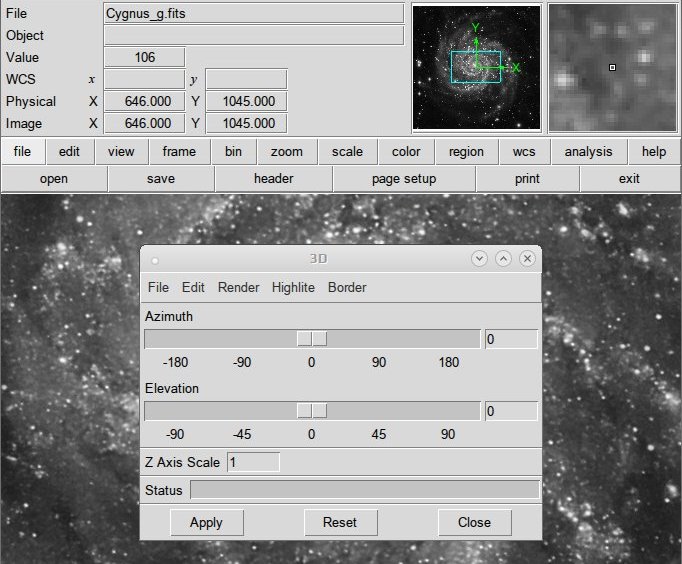
Under “region,” hit “load.” Navigate to your. There are many options for plotting, you can find them all here: ģ) Open the. For more information, consult the excellent and thorough ds9 user manual. In fact, it has so many features that I can only hope to mention a small fraction of them here. Point(1.51655e+04,1.0895e+03) # point=circle 1 ds9 (whose name really does derive from Star Trek) can be used for everything from simply inspecting images to making publication-quality figures. > np.savetxt(‘coords.txt’, coords, delimiter=’,’, newline=’\n’)Ģ) In a text editor, edit the text file into a. I was using python and already had my rapixels and decpixels lists: To overplot these positions on the map:ġ) Save x and y coordinates in a text file. I believe this can also be done using ra and dec positions, toggling the wcs coordinate type when you load the. That is, I had x and y coordinates in pixel space. It took a fair amount of work adjusting the stretch parameters to get the image to look the way it does as shown in this article. I started with a FITS map, let’s call it “map.fits,” and lists of ra and dec coordinates of the galaxy positions converted into “physical” coordinates in the map. SAOImage DS9 produced average results that were out of alignment. I didn’t find an easy example of this online, so here’s the simplest method I’ve found to do this, using “regions” in SAOImage DS9.
#Saoimage ds9 scale meaning plus
A major plus are the following: the tool is free of cost, has rich documentation for understanding where to start learning, and is supported by the astronomical community (which is prolific for quality and assistance).I wanted to plot the locations of BOSS DR12 galaxy positions on top of the map of the CMB I’m currently working with. DS9 supports FITS images and binary tables, multiple frame buffers, region manipulation, and many scale algorithms and. To summarize, SAOImageDS9 is an excellent choice for anyone interested in conducting in-depth analysis in the astronomical field. SAOImageDS9 is an astronomical imaging and data visualization application. Last but not least, with the help of the built-in Prism feature, you can preview and analyze FITS file structures, examine all the extensions (including the headers and the table data), and generate 2D and histogram plots, straight from your column data. DS9 supports FITS images and binary tables, multiple frame buffers, region manipulation, and many scale algorithms and colormaps. Plus, with the new footprint server, users get increased compatibility with Chandra and Hubble Legacy Archive. SAOImage DS9 is an astronomical imaging and data visualization application. This overlay displays valuable configuration options and choices for filtering, sorting, and registering unique observations (from the catalog dialog's config options).

For example, when it comes to GUI changes, users can replace the light theme with the dark one, and they also have available controllers for the display of all windows, plots, and dialogs.įurthermore, the app adds an overlay onto any loaded image. SAOImageDS9 is a powerful utility that offers accessibility, solid performance, and flexible design configuration.

A utility with embedded footprint server, plot dialogs support, and a Prism feature The tool enables frame adjustment on the map, different zooming in and out (with predefined levels), scale configuration, region focus and selection, or mask, graph, and crosshair parameter adjustments.
#Saoimage ds9 scale meaning windows
The tool also allows importing arrays, n-dimensional raster data (NRRD), flat-binary raster files (ENVI), and other types of visual elements in the following formats: GIF, TIFF, JPEG, and PNG.Īfter uploading your content, you have the general viewing panel, plus two smaller windows that allow visualizing the space orientation on the map, respectively, the frame, pixel-like objects (for in-detail lookup). With SAOImageDS9 you can easily open new FITS files and start examining the content within minutes. SAOImageDS9 is a multi-platform tool, a Tk/Tcl program that enables visualizing astronomical images and analyzing complex FITS data.


 0 kommentar(er)
0 kommentar(er)
